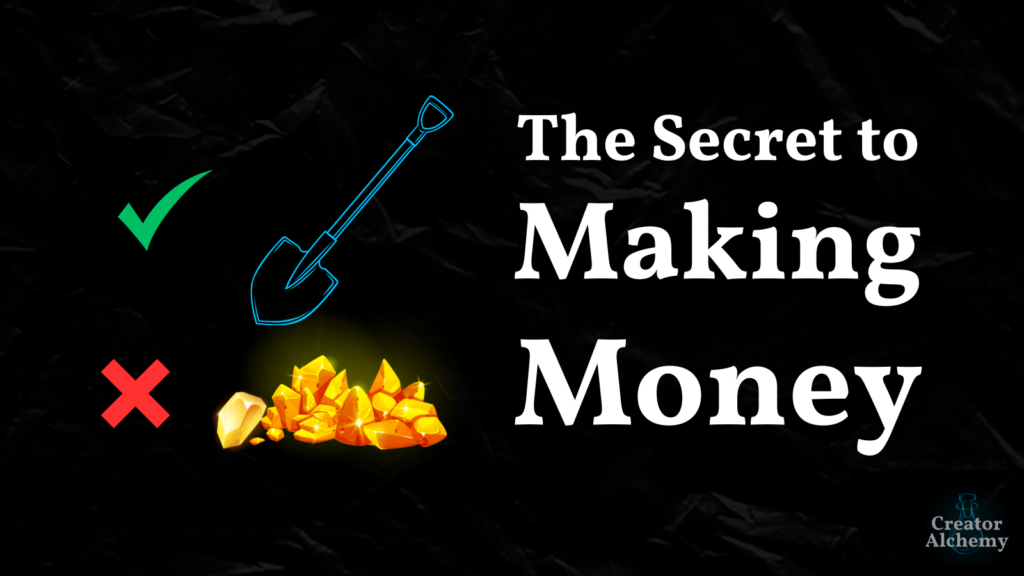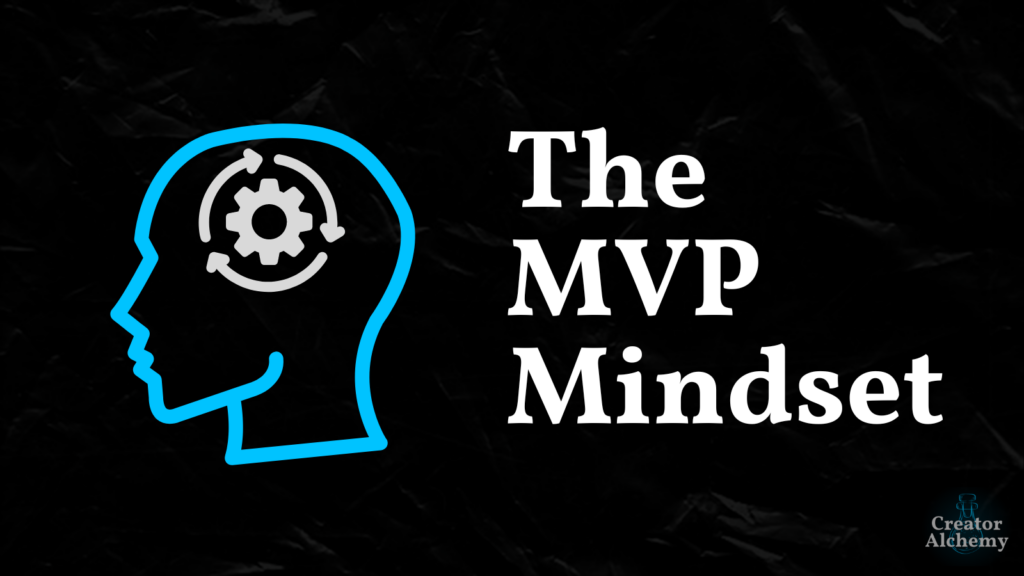It takes creators 3 years to cross $80K and 6 years to cross $100K on average.
So staying in the game long enough to gain traction is critical.
But burnout is the biggest reason many creators quit.
And most remedies for burnout don’t actually work.
Because they’re not rooted in real psychology and aren’t targeted toward creators.
So today, we’re going to dive deep into how you can avoid (or recover from) burnout as a creator.
But first, let’s lay the foundation…
In my recent article, 7 Critical Lessons to Flourish in the Creator Economy, we talked about how 47% of creators experienced burnout last year.
So nearly half of all creators struggled with burnout in the last year—that’s insane.
But before we go further, we need to make sure we’re on the same page about burnout—because tons of things can look like burnout, but not be.
For example…
Is it burnout or is it just reality not meeting your unrealistic expectations? This is common for creators just starting out. If that’s the case, read Why Most Content Creators Go Broke and Give Up first.
Is it burnout or are you butting up against your own limiting beliefs and fears telling you to quit? This is common for creators a bit further along in their journey. If that’s the case, check out The Four Horsemen of Fear first.
Or is it actual burnout—where the work that used to energize you, now drains you? Where the majority of what you do every day feels like a slog instead of an exhilarating challenge? Where you feel like Bill Murray from Groundhog Day—doing the same things, talking about the same things, for the same people—instead of exploring your creativity?
Because today we’re talking about actual burnout—how to avoid burnout, how to minimize burnout, how to recover from burnout, and how to return to work after burnout.
Cool? Let’s dive in…
•••
How to Measure Your Capacity for Burnout
Before you can deal with burnout, you need to understand your susceptibility to it.
Enter: Your Burnout Battery.
Maybe you have a normal-sized fully-charged battery.
But maybe your battery is naturally smaller. So even fully charged, it depletes way faster than a “normal” sized battery. For example, I burn out super easy. Which is why I was always a terrible employee—anytime I felt like the work I did wasn’t important, got pressured to conform or hide my personality, or felt trapped by bureaucracy—I’d fully disengage and quit soon after.
Or maybe you have a normal-sized battery, but due to various circumstances (stress, poor sleep or nutrition, feeling trapped, etc.) you’re not operating at full capacity right now.

You have to understand your default capacity to handle things and how that influences your susceptibility to burnout.
If you wake up with your normal-sized battery chronically depleted because you neglect your physical and mental health, you’re fucked.
If your battery is small and instead of embracing that fact and finding ways to build your workflow around it, you deny it and try to pretend your capacity is the same as everyone else’s, you’re fucked.
A little self-care, accepting reality, and adapting to it go a long way.
But assuming you’re not making these basic mistakes that lead to faster burnout, you’re ready to take the next step—anticipating and avoiding the causes of burnout.
•••
How to Avoid Burnout
Learning to anticipate what drains our Burnout Battery—and how much energy it drains—is the first step toward avoiding major sources of burnout.
Because it’s easier to remove what drains your battery than constantly try to recharge it.
Here are 3 common sources that drain your Burnout Battery…
Sources of Burnout: Decisions
A huge cause of burnout is doing work that’s unaligned to how you want your life and business to look.
Everything has an opportunity cost.
Saying “yes” to one thing means saying “no” to dozens of others.
But learning to default to “no” frees you up to say “yes” to what truly matters.
So anytime you have an idea or an opportunity comes your way, ask yourself, “Do I want the successful version of this?”
Most of the time, the long-term consequences of a decision outweigh the short-term benefits.
For example, when I stopped practicing therapy, the “easy” route would have been to do consultation for medical and behavioral health directors of US healthcare clinics. I knew the industry, the pain points, and had solid solutions. But I was already burnt out from years in the medical field. I would’ve been miserable in the long term. So I left it all behind to do what I do now.
Not all brand deals are worth accepting.
Not all collaborations are worth committing to.
Not all projects are worth your time, energy, or attention.
Give yourself space to deeply consider where saying “yes” to this opportunity could lead.
When in doubt, default to “no.”
Your peace of mind is worth more than whatever number they write on the check.
Sources of Burnout: Thoughts
Learning to recognize psychological sources of burnout is also critical.
According to this awesome write-up by Kaleigh Moore, the most common causes of burnout include:
- Not being able to mentally disengage from work
- The emotional toll of being a personal brand
- The pressure to post content everywhere
- Comparison culture
- Feeling siloed
But for most of us, these don’t happen in isolation.
We feel the pressure to constantly be “on” and post to all the platforms. And we constantly compare ourselves to our peers or creators several years ahead of us, which makes us feel more inadequate and spread ourselves even thinner. All the while, we’re trying to be a one-person media company and go “monk mode,” whatever that is.
So practicing what psychologists call metacognition—learning to observe your own thoughts and reactions—is critical to identifying and anticipating psychological sources of burnout.
One way to practice metacognition is to build a habit of asking questions like:
- “When I see [peer] achieve [win], what thoughts fill my head? Do I feel shame that I haven’t accomplished as much, am I purely happy for them, or does seeing them win inspire me to do more?”
- “How supported do I feel as a creator on a day-to-day basis? When was the last time I reached out to [peer] to catch up?”
- “How aligned are my personal life and public persona? Do I feel psychologically safe embracing my authenticity, or do I feel pressured to play a role that feels inauthentic?”
- “Whose approval or validation am I seeking right now? External validation or attention from complete strangers? Respect from my peers? Or am I doing this purely because it’s intrinsically rewarding for me?”
- “How much of my self-worth am I allowing to be dictated by things outside my control like revenue, follower count, or likes on a post?”
Practicing asking yourself questions like these helps you be more aware of how your thoughts drain your Burnout Battery.
Sources of Burnout: Tasks
Your creator business is just that—a business. And every successful business has tasks that have to get done on a regular basis.
Take an inventory of what tasks drain your Burnout Battery and how much they drain it:
- Red: High energy drain
- Orange: Moderate energy drain
- Yellow: Mild energy drain
- Green: Minimal energy drain (but would add up if you did it too much)
Here’s an example of how it looks for me:
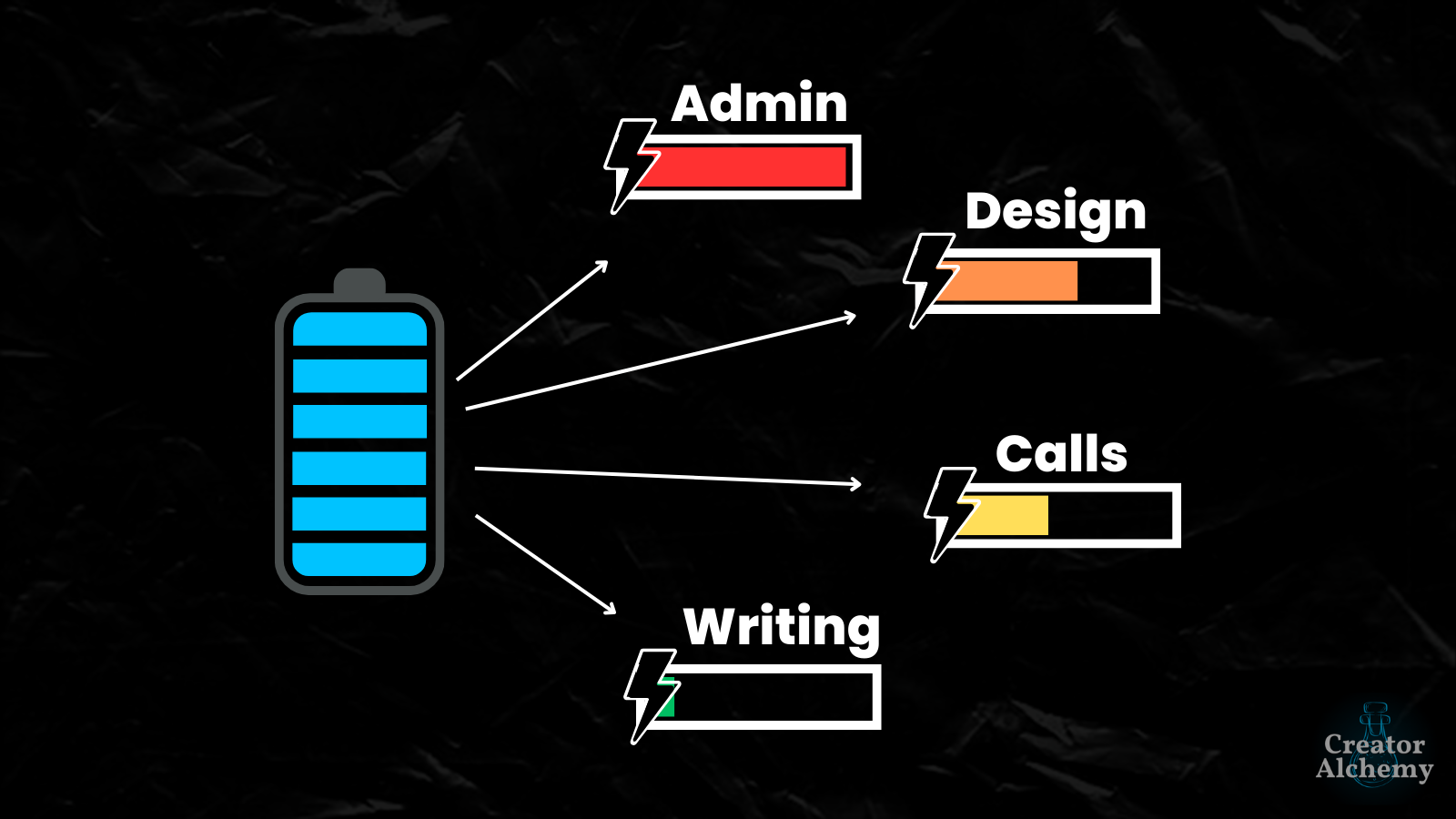
I know people who are the opposite—they love administrative tasks and hate writing.
It’s all about knowing yourself, your susceptibility to burnout, and how much energy different things drain from you.
The sooner you can recognize these sources, the sooner you can take corrective action to avoid burnout.
But you can’t avoid everything that can cause burnout.
Sometimes you have to do things that drain your Burnout Battery.
In this case, we have to learn how to minimize it…
•••
How to Minimize Burnout
Minimizing burnout comes down to offloading and restructuring as much as you can.
I’m sure you know how to do an Eisenhower Matrix by now, but here’s a twist to minimize burnout…
Create 2 columns.
In Column 1, write out things that:
- are draining
- are required
- aren’t necessary for you to personally handle
In Column 2, write out things that::
- are draining
- are required
- are necessary for you to personally handle
Everything in Column 1, try to offload.
Everything in Column 2, try to restructure.
This lets you focus on the few things that truly matter instead of trying to do everything, all at once, all by yourself.
Let’s take the example from above of tasks that drain my Burnout Battery…
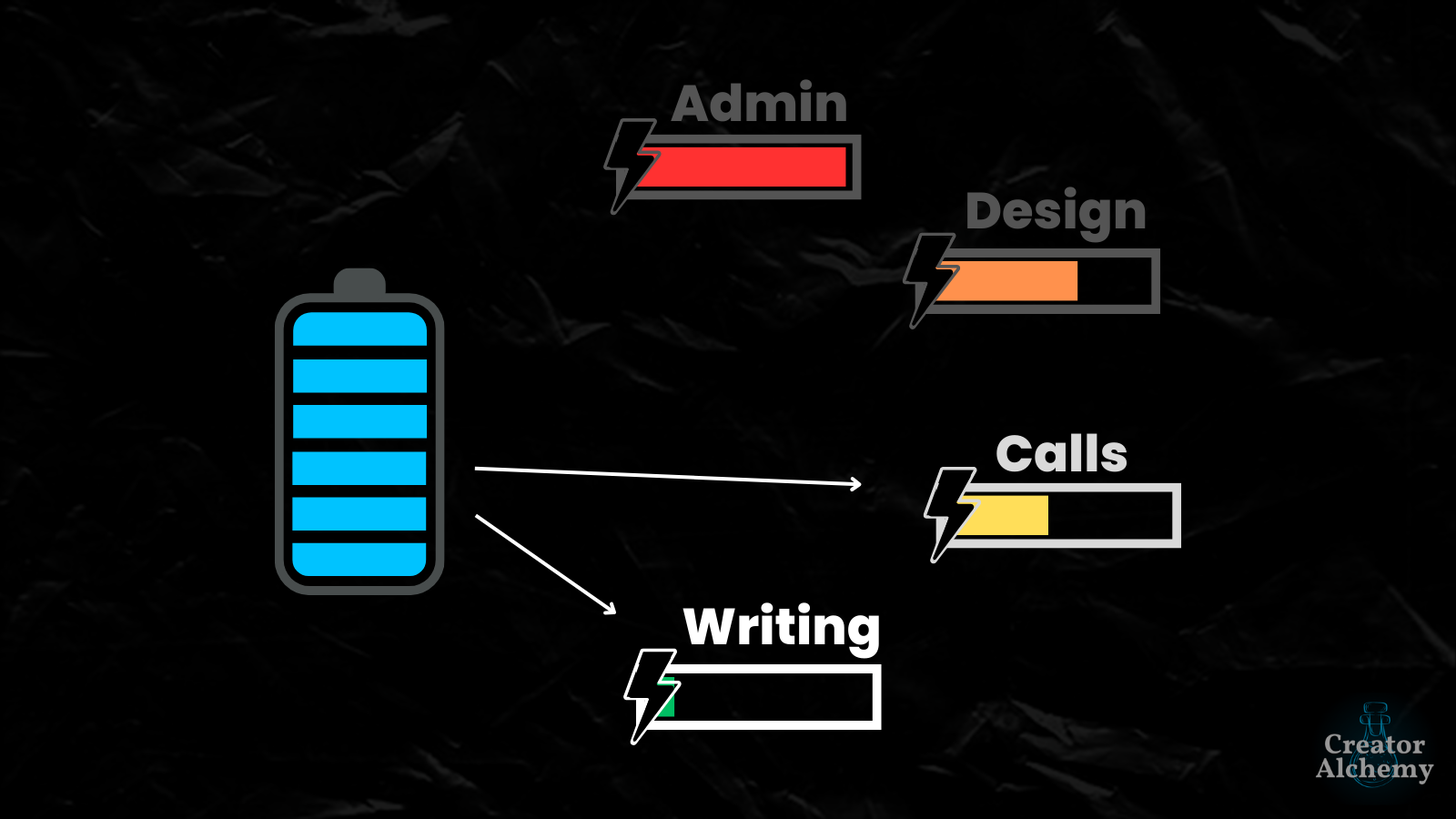
Offload: Administrative tasks like emails, taxes, subscriptions, etc. are huge energy-draining tasks for me. So finding ways to automate or outsource these tasks helps me avoid a major source of burnout.
Offload: I suck at design. So I either outsource design stuff or create templates to simplify my workflow. Otherwise, I’ll spend way too much time and frustration fiddling around creating something that ultimately looks like a drunk 5-year-old made it in Microsoft Paint.
Restructure: Doing discovery calls for prospective coaching clients, interviews with podcasts that weren’t aligned or didn’t have a professional work ethic, or coffee chats with people wanting to “pick my brain” were also draining. So I stopped doing them. Instead, now I do calls with people who inspire me, do podcasts that are aligned and take their work seriously, and leverage free content and copywriting (plus testimonials) on sales pages to convert people to my paid stuff.
Restructure: And with writing, I vary what I talk about to keep it fresh. It’s why I don’t “say 1 thing 1,000 different ways” like most Twitter gurus recommend. I tried it. I hated it. I stopped it. I’d rather do deep dives (like this one) than spout the same platitude a different way every day.
You don’t have to do everything yourself. And you don’t have to do everything the way you’re “supposed” to do it.
Too many creators try to be one-person media companies and burn out.
But the opposite can also lead to burnout…
One issue many “successful” creators run into is they feel pressured to scale. So they hire people to help them. They read some business books that tell them to “fire” themselves and offload tons of tasks to their team so they can work “on the business instead of in the business.”
That all sounds great, which is why it’s a trap.
See, most creators love to create (duh). But they slowly fire themselves from all the creative aspects of their business until all they’re left with is managing other creators.
Creators who spend most of their time creating, feel connected to their work.
Creators who spend most of their time not creating, don’t.
Because you don’t feel like a creator anymore—you feel like a manager, totally disconnected from doing the work you actually enjoy doing.
You spend all day in meetings, coordinating projects, doing calls, reviewing contracts and edits, doing HR stuff like interviewing and firing, and tons of other tasks that don’t allow you to leverage where you’re most valuable to your business—actually creating fucking content.
Burnout Battery: Drained.
The point is to fire yourself from the stuff you don’t enjoy so you can focus on the things you do enjoy.
But if you’re a writer and you hire other people to write for you or use AI to write up drafts (or both), you’ve fired yourself from the main thing you love doing.
Now, if you want to just be an entrepreneur who occasionally makes content—totally cool. But we’re talking about creator burnout, and this is a major cause of it.
But creating too much, constantly, can also lead to burnout.
See why it’s critical you understand yourself and your own sources of burnout?
Identify your energy drains.
Offload what you don’t have to personally handle.
Restructure what you do have to personally handle.
Focus on positioning yourself to do the work that truly matters (and you enjoy).
But sometimes you catch all this too late, and you burn out.
Here’s how to recover from burnout after it happens…
•••
How to Recover From Burnout
What do you do when a rechargeable battery is drained?
You recharge it (duh).
But before you can recharge your Burnout Battery, you have to disconnect it from the things draining its energy, and then create a conducive environment for it to recharge.
Here’s the 3-step process to properly recharge your Burnout Battery…
Step 1: Disconnect
Imagine if you took 2 weeks away from your business and day-to-day routine to go live in a cabin, road trip across the country, or do a silent meditation retreat.
Fully disconnected from all the stress and sources of burnout.
How much clarity would you come back with?
Well, you don’t have to do all that to disconnect.
But you do need to find a way to mentally distance yourself from the sources of your burnout.
If your business is so fragile that if you took a week off, everything would burn to the ground—you fucked up a long time ago. Because either you intentionally take a few days or week off to deal with burnout, or burnout fully kicks in and everything goes up in smoke anyway.
Trust me, chronic stress and burnout only compound if you don’t deal with them.
A few super simple things you can do right now:
- Turn off notifications. The people who truly matter already have your number if they need to contact you. Any email or social media notification is rarely so important you can’t check it on your terms in a few hours. No need to be available 24/7 for everyone tugging at your attention.
- Straight up ignore most messages. You don’t owe everyone your time, energy, or attention and are under no obligation to defend or justify yourself.
- Take a few days off the platforms draining you. Everyone will still be there when you get back and the algo will do whatever it wants anyway. Schedule posts in advance if you feel pressured to post daily.
If you can disconnect for an extended period of time, you’ll come out with tons of clarity.
Even setting aside an hour a day, a few hours a week, or an entire day per month to fully disconnect will set you up for success.
Our minds need solitude for deep contemplation.
Deep contemplation leads to profound clarity.
Profound clarity allows us to focus on what matters, filter out what doesn’t, and fully show up in the work we do.
Disconnecting from what drains you gives you the mental space to do the next part—reflect.
Step 2: Reflect
This is a crucial step if you want to properly recharge and recover from burnout.
You’ve created the space and solitude your mind needs for deep contemplation.
Now you need to give it things to contemplate.
Pull out a journal or put on your favorite meditation music and zoom out.
Reflect on what actually matters in your life and business. The life you want to live today, the impact you want to have on the world tomorrow, and the legacy you want to leave behind.
Here are some questions to get you started—browse through and pick ones that stand out to you:
- If you could redesign your workflow from the ground up, what would it look like?
- If you were starting over with your creator business, what would be different?
- Where are you unaligned in life and business?
- What topics or ideas fill you with energy just thinking about?
- How can you better align your life and business with your Core Value?
- Where are you getting in your own way?
- How are you overcomplicating things?
- How are you thinking too small?
- How much mental space does “the algo” take up in your mind? How much do algo changes influence, or dictate, your stress levels? How can you shift how you approach creating to care less about the algo and more about your audience?
- What limiting beliefs are holding you back?
- How can you conquer the Tyranny of the Urgent so you can be more proactive instead of reactive?
- What impact do you truly want to have on the world, and why?
- What is the obvious path to doing it that you’ve been overlooking?
- Who do you want to help, what do you want to help them do, why do you want to help them do it, how can you help them do it, and where is the best place to help them do it?
- What does the world desperately need that you’d love to give it?
- What transferrable skills can you leverage to explore new opportunities or evolve your current business?
- If you didn’t have to worry about money again, what would become your life’s mission?
- If you started a side project that was completely unrelated to what you do now, what would that be? Fully flesh it out.
- If you woke up tomorrow and were world-famous for something, what would you want to be world-famous for?
- What is a truth, concept, or idea that if more people believed it, the world would be a better place?
- If this had been your last week alive, are you satisfied with how you spent your time? What would you want to have done less of? What would you want to have done more of? How can you make these changes a reality?
Once you contemplate these questions, or others you think will help give you some perspective, you’re ready to actually recharge…
Step 3: Recharge
You’ve disconnected from the things draining you.
You’ve created mental space and deeply reflected on what matters, and come out with tons of clarity.
Now you’re ready to recharge your Burnout Battery.
What activities energize you the most?
Do those things.
It’s easy to get so caught up in reactive mode that we neglect ourselves and the things we know we need to do to stay energized, think clearly, and show up fully in our work.
The things we most need to do are the first things we neglect.
Anytime I feel too busy to recharge, I remember this Zen quote:
“Meditate for an hour every day unless you are too busy. In that case, meditate for two hours.”
Here’s an example of some activities that work for me:
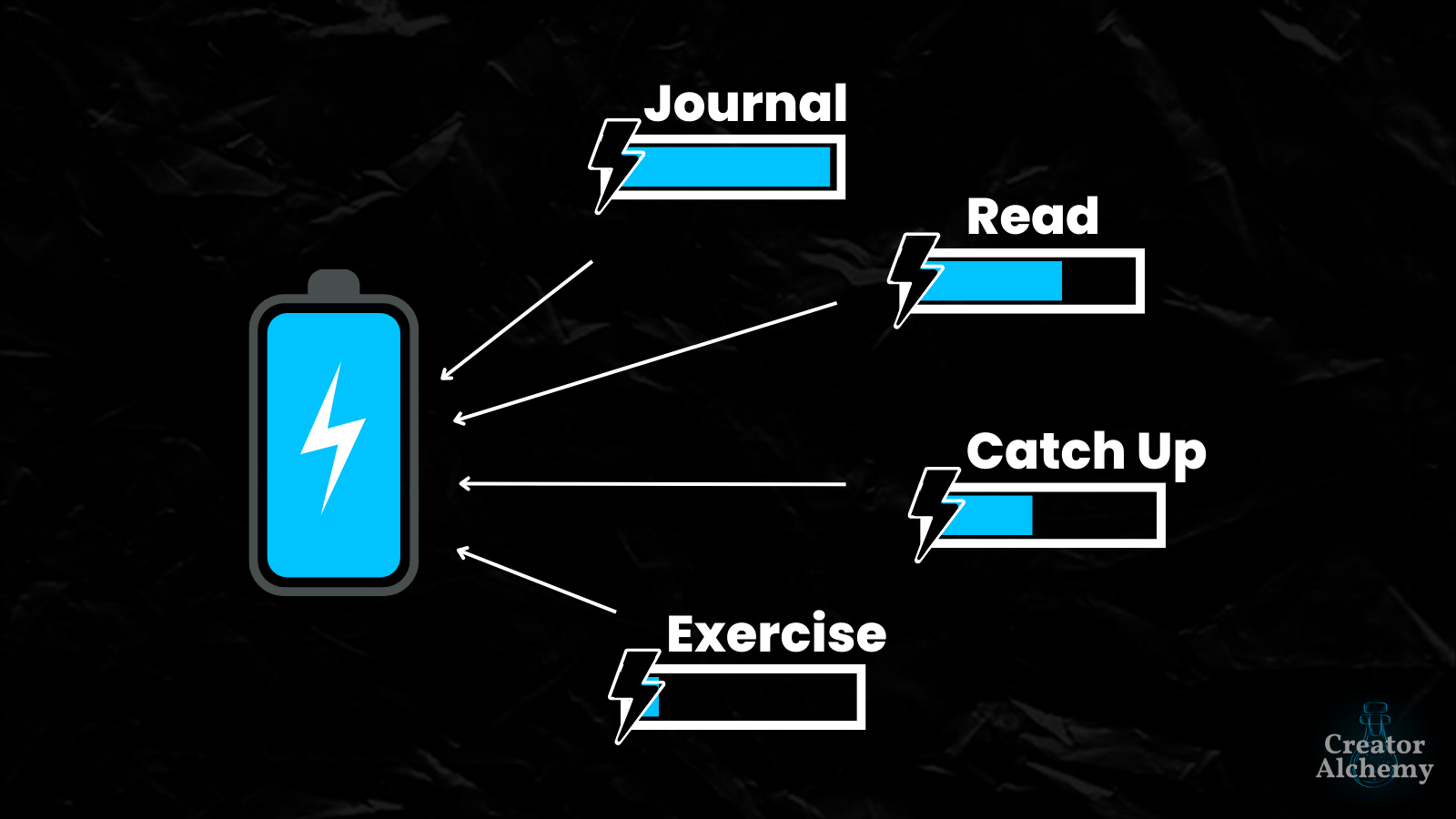
As a creator, our primary source of leverage is our ability to think. But stress, the chaos of life, and constant tugs at our attention from the outside world obscure our ability to think clearly. Anytime I feel like I’ve lost perspective and I’m getting too bogged down in bullshit, it’s because I haven’t journaled in a minute. Journaling, without fail, helps me put life back into perspective and break through mental plateaus. Journaling also acts as a combination of reflecting and recharging for me.
All great writers are prolific readers. Reading allows you to expose yourself to new ideas. Anytime my content feels stale or I’m struggling to come up with something valuable, it’s because I haven’t been reading. But as soon as I pick up a book and start on the first page, my mind instantly whirrs into action coming up with cool ideas to refine and share.
David Perell talks about “writing from conversation” all the time. Catching up with creator friends always energizes me because not only do I get to connect with them and celebrate their wins, I also walk away with tons of inspiration for my own life and business.
Exercise is something I do—not because I enjoy it—but because not doing it makes me feel worse. I don’t notice the effects of skipping a workout for a few days. But if I go a week without lifting or doing BJJ? I get restless and can feel my frustration tolerance diminish, which makes me more susceptible to stress (and burnout).
Here’s a simple exercise to try:
- List out the activities that give you energy
- Rate how much each recharges you
- Add these to your schedule
- Then actually do them
A depleted batter is nothing more than a toxic paperweight.
You have to recharge if you want to be effective and stay in the creator game.
It might feel pointless to recharge.
It might feel selfish to recharge.
It might feel stupid to recharge.
But it is critical to recharge.
Now, you’re ready for the final step—returning to work after burnout…
•••
How to Return to Work After Burnout
One thing most people who’ve fully burned out and return to work have in common:
They come back transformed.
Because the process of distancing, reflecting, and recharging from burnout actually recalibrates your Burnout Battery.
Remember, you’ve not only experienced how bad burnout feels—you’ve also gained tons of clarity on what causes it for you, what truly matters, how you want to show up in your work, the impact you want to have, and the legacy you want to leave behind.
There’s a newfound intentionality behind your actions and how you approach work.
You have a higher capacity for work, more energy, and a higher output.
But all that recalibration comes at a cost:
You’re Burnout Battery is incompatible with a lot of the things you used to do.
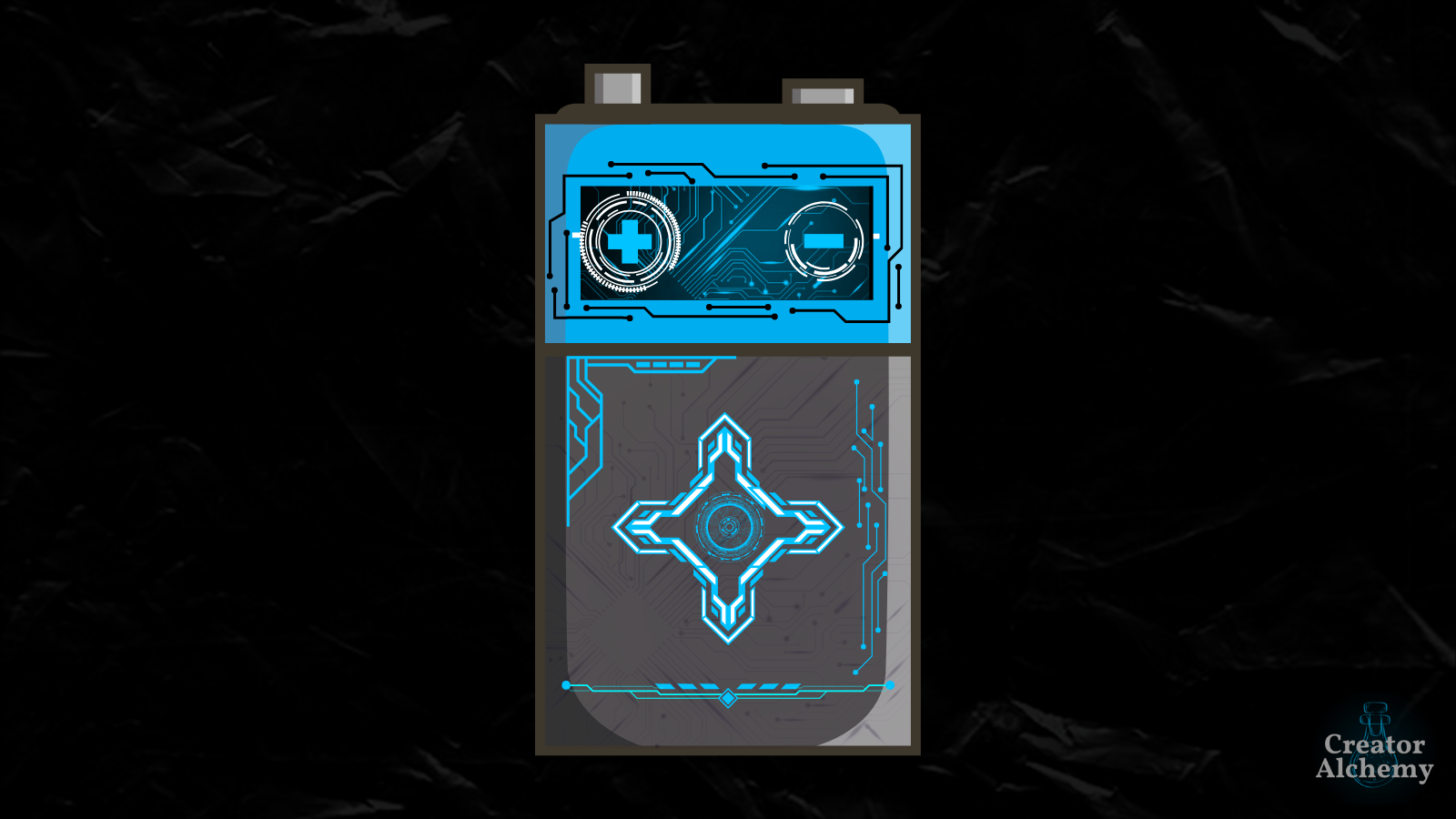
Because you know that if you want to be the most effective in your life and your business, you have to be incompatible with many of the old things that drained your energy.
So you’re super selective with what you connect to your Burnout Battery.
This frees you to fully show up in the work that truly matters:
- You default to “no” so you can say “yes” to the few things that truly matter.
- You set healthy boundaries so you stop overcommitting yourself, stop taking on projects that don’t align with your mission, and stop letting the chaos of life pull you away from the things you love doing.
- You focus on doing work that’s intrinsically rewarding instead of seeking external validation. You appreciate attention and accolades when they happen, but you show up because your work has a deeper existential significance to you—not because your latest post got 3% more likes than your last one.
If this feels impossible, or like some motivational speech bullshit, I promise you—it’s not.
Here are a few of my favorite creators (and now friends) who burned out and came back better than ever. They’re simultaneously more driven and more calm, and they show up with an intentionality and insight they never had before:
Jamie Rawsthorne grew his YouTube channel to over 900K, then burned out and decided to travel and rediscover himself and his passions. Now, he’s thriving as a YouTube consultant for massive names like Codie Sanchez and Morning Brew.
Michael Ashcroft left a 10-year corporate and consulting career in low carbon energy innovation after he burned out to pursue his “dream of living a self-directed life as a free agent.” Now, he’s thriving as a writer and course creator.
Kieran Drew spent years training to become a dentist. Then he realized he was on the path to lucrative misery, so he quit. Now? He’s thriving as a writer and course creator.
Burnout can be a blessing if you use it as a catalyst to recalibrate and return to work on your terms.
•••
Final Thoughts
You can get showered in positive feedback, accolades, and attention, and still burn out.
You can have multi-six figures in subscribers and revenue, and still burn out.
You can be intelligent, disciplined, and ambitious, and still burn out.
No one is immune to burnout.
So learning to deal with burnout—avoiding it, minimizing it, recovering from it, and recalibrating after it—is critical if we want to keep showing up and doing the work only we can do as creators.
I hope this piece was helpful for you, and I hope it can be a resource you come back to any time you need it.
Take care of your Burnout Battery—it’s the only one you’ve got.
•••
Bonus Tips on Burnout
Here are a few more practical bits to help with burnout:
Build your own stuff.
A common complaint I hear from creators revolves around sponsorships. Brand deals create pressure to perform. “I have to do X video for Y brand by Z date.” There’s nothing wrong with sponsorships, but beware if these are depleting your battery. If you have your own products, you can literally just sponsor your own stuff. Then you don’t feel the same pressure to perform or hit a deadline, you maintain full control over your copy, and don’t have to go back and forth with the brand’s team to finalize the project.
Diversify your income.
If you have one primary source of income, and it starts to dry up, you’ll panic and start to sacrifice too much to get it back. A gilded cage, no matter how ornate, is still a cage. Coaching, courses, affiliate revenue, workshops, physical goods, whatever. Try to have at least 2, but preferably more. A little diversification goes a long way toward peace of mind.
Be willing to leave money on the table.
Whoever has walkaway power, wins. Not every dollar is worth the same if it comes with a tenfold increase in stress.
Find a community.
There’s an African proverb that says, “If you want to go fast, go alone. If you want to go far, go together.” Creators are an odd bunch. We spend all day creating for a massive audience, but we actually create it by ourselves. We connect with our audience through our content, but we spend most of our day disconnected and alone. It’s isolating. Finding the right group of supportive peers goes a long way to dealing with burnout.
Give yourself permission to evolve.
If you’re afraid to evolve because your audience might leave, then as they leave, you’ll attract others. Your “audience” isn’t a homogenous thing—it’s a group of individuals who initially followed you because they resonated with you. Content is a commodity. But your personality, your reputation, your story, your experiences, your passion—these are moats that draw in the right people.

